Lubomir Kavalek
Hikaru Nakamura's Great Chess Triump
The Huffington Post, January 31, 2011On the day the Serbian tennis player Novak Djokovic won the Australian Open in Melbourne, the American chess grandmaster Hikaru Nakamura, 23, achieved the best success of his life.
He won the chess equivalent of a Grand Slam event - the Tata Steel Chess tournament in the Dutch coastal town of Wijk aan Zee ahead of the world's four top-rated grandmasters.

"I cannot remember the last time an American won a major tournament. I hope my victory will make for greater interest in chess back home in the [United ]States," happy Hikaru said after his victory.
On the way to first place, Nakamura defeated six opponents, drew six games and lost once, for a 9-4 score. He outpaced the world champion Vishy Anand of India by a half point. The world's top-rated grandmaster Magnus Carlsen of Norway and Levon Aronian of Armenia shared third place with 8 points. The former world champion Vladimir Kramnik of Russia and the Frenchman Maxime Vachier-Lagrave finished with 7,5 points. The other eight players didn't score above 50 percent.
The Czech David Navara and the Englishman Luke McShane showed excellent fighting spirit and shared first place in the grandmaster group B, scoring 8,5/13. Both players will be promoted to the top group next year. The Italian GM Daniele Vocaturo won group C with a 9-4 score.
Anand has been the most successful player in Wijk aan Zee, winning the prestigious event five times. He was close to triumphing this year, going undefeated and scoring four wins. But he needed one more win to catch the American grandmaster. Nakamura's nine points is an excellent result. It is one point shy of Garry Kasparov's historical record from 1999. That year Kasparov not only played well, but he also created his most spectacular game against the Bulgarian Veselin Topalov.
The tribulations and triumphs of the Advanced Caro-Kann
Nakamura and Magnus Carlsen are typical kids of Internet chess. During their teenage years they spent many hours blitzing online. As they grew older and their chess matured, they became more serious. Their opening preparation has been excellent. Good examples are two Caro-Kann games they played in Wijk aan Zee.
The solid Caro-Kann was played by many great players such as the world champions Jose Raul Capablanca, Mikhail Botvinnik, Tigran Petrosian, Anatoly Karpov and Anand. Even the young Kasparov tried it for a while. Black's position is sound and exchanging a few light pieces greatly diminishes white's attacking chances. In the Advanced variation white grabs space and keeps most of the pieces in play - and it pleases all attacking souls. The following two games show the tricks and twists of the popular line. In the first game Nakamura as black meets the Russian champion Ian Nepomniachtchi and the play turns wild in no time.
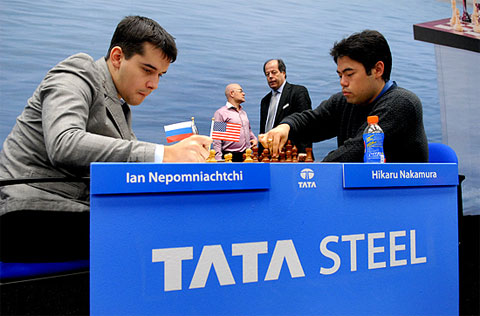
Nepomniachtchi - Nakamura
Wijk aan Zee 2011
1.e4 c6 2.d4 d5 (Altough Nakamura plays almost everything against 1.e4, the Caro-Kann and the French defenses suit him better than the Sicilian. ) 3.e5 (The Russian champion is known for his bizzare play against the Caro-Kann, for example 3.f3 Qb6 4.a4?!) 3...Bf5 (The Advance variation gives white more space, but allows black's light bishop to jump out.) 4.h4 (The legendary Paul Keres played this tricky move already at the 1932 Estonian Junior championship where he won all nine games. It prevents 4...e6 because of 5.g4 Be4 6.f3 Bg6 7.h5 and the bishop is lost. But the popularity of this move picked up after the 1961 world championship match Tal-Botvinnik. In the past, Nepomniachtchi preferred the more solid 4.Be3.) 4...h5 (Weakening the square g5. Botvinnik, the great strategist, preferred to give up space 4...h6 5.g4 Bd7 6.h5 e6 7.f4 to counterattack with 7...c5.) 5.c4 e6 6.Nc3 Ne7 (Karpov often played here 6...Nd7 and the smooth positional choice 7.cxd5!? is white's best, for example 7...cxd5 8.Bd3 Bxd3 9.Qxd3 Ne7 10.Nf3!? with a space advantage. In an important game McShane-So, played in the penultimate round of the B-group in Wijk aan Zee, white chose after 6...Nd7 Tal's continuation 7.Nge2 and after 7...dxc4 8.Ng3 Nb6 [Novelty.] 9.Be2 [9.Nxf5 exf5 10.Be2] 9...Bg6 10.Bg5 Be7 11.Nge4 f6 12.Bf4 Nd5 13.Bg3 Qb6 14.0-0 Nxc3 15.Nxc3 Qxb2 the Englishman went for a risky Tal-like piece sacrifice: 16.Bxc4 Qxc3 17.Rc1 Qb2 18.Bxe6 keeping the black king in the middle.
After 18...Rd8 19.d5 fxe5 20.Re1 Bf6 21.Re2 Qa3 22.Bxe5 Bxe5 23.Rxe5 Kf8 24.Qe1 the blunder 24... 24...Qd6? [24...Rh6 blunted the attack.] 25.Bxg8 Kxg8 26.Re6 Qxd5 27.Rxg6 Rh6 [27...Kh7 28.Rg5 Rhe8 29.Qb4 Qf7=] 28.Rxh6 gxh6 29.Qe3 Rd7 30.Qxh6 Rg7 31.g3 Qd4 32.Qe6+ Rf7 33.Qe2 Kg7 34.Rf1 Kg6 35.Rd1 Qf6 36.Qe3 b6 37.Rd4 Re7 38.Qd3+ Kg7 39.Rf4 Qe6 40.Rf5 Rf7 and black resigned, since 41.Rg5+ Kh6 42.Qd1 wins.) 7.Nge2 (White goes chasing the bishop, aiming for the pawn on h5. There is no doubt Nepo's choice was influenced by Svidler's victory over Nakamura in Amsterdam last year. The more popular 7.Bg5 can be best met by 7...Qb6.)
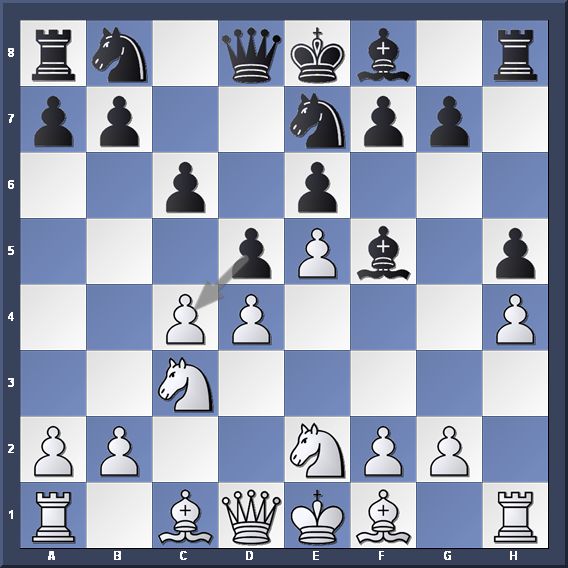
7...Bg4!? (Nakamura's preparation was excellent throughout the tournament. He does a nice job tweaking his previous play with an unusual, provocative maneuver. Last year in Amsterdam, he lost to Peter Svidler, playing 7...dxc4 8.Ng3 Bg6 9.Bg5 Qb6 10.Qd2 Qb4 11.a3 Qb3 12.Nge4 Nd5 13.Rh3 Qb6 14.Bxc4 Qa5 15.Nd6+ Bxd6 16.exd6 Nd7 17.Rc1 Nxc3 18.Rcxc3 Nf6 19.b4 Qd8 20.Qf4 Kd7 21.Rhe3 Re8 22.b5 Qa5 23.Bxf6 gxf6 24.Kf1 Bf5 25.Be2 Rac8 26.Rc5 Qa4 27.Rec3 a6 28.b6 Bg6 29.Qxf6 e5 30.Rxe5 Rxe5 31.dxe5 Re8 32.Re3 Re6 33.Qg5 Qd4 34.Kg1 Be4 35.Qxh5 Rxe5 36.Qxf7+ Kxd6 37.Qxb7 and black resigned.) 8.f3 Bf5 9.Ng3 Bg6 (True, black lost time, but the pawn on f3 blocks the diagonal d1-h5 and makes the knight on g3 unstable. This becomes important after black breaks in the center.) 10.Bg5 Qb6 11.Qd2 Nd7 12.a3 f6! (Black has to fight back before he is smothered.) 13.Be3 Qb3! 14.cxd5 Nxd5 15.Nxd5 Qxd5 16.Rc1 Nb6 (Preventing 17.Bc4. After 16...fxe5 17.Bc4 Qd6 18.Ne2 white's pieces are more active than in the game.) 17.Ne2 (The threat 18.Nf4 forces black to take the pawn. Other moves allow black to castle long with good play.) 17...fxe5 18.dxe5 Qxe5 19.Bd4 Qc7 20.Qg5 Bf5!? (Hikaru defies gravity and doesn't drop his bishop back. After 20...Bf7 21.Be5 Bd6 22.Bxd6 Qxd6 23.Qxg7 Rg8 24.Qd4 white is only slightly worse.)
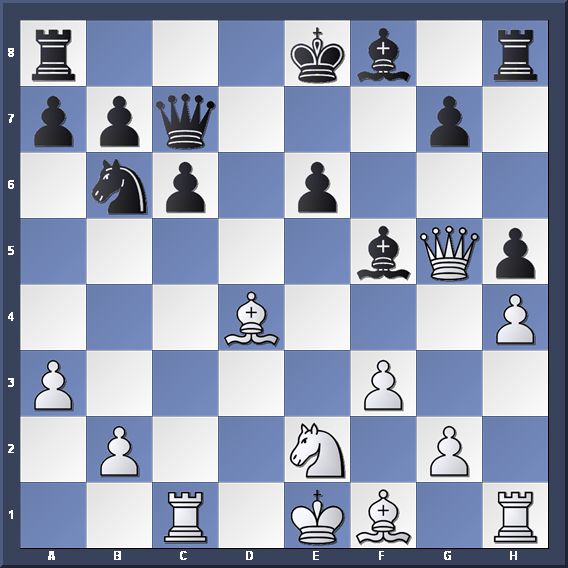
21.g4? (Nakamura's provocation worked. Going all out, the Russian champion overextends himself a should have been punished quickly.) 21...hxg4 22.fxg4 Be4? (Too slow. The computers spit the winning line fast: 22...Be7! 23.Qxg7 Rh7 24.Qg8+ Kd7 25.Bxb6 Rxg8 26.Bxc7 Be4 27.Rh3 Kxc7 and white can't protect his kingside pawns.) 23.Rh3 Be7 24.Qxg7? (A mistake, giving black a clear advantage. White had to try 24.Qe3 Bd5 25.h5 with some fighting chances.) 24...Rh7 25.Qe5 (25.Qg8+ is met again by 25...Kd7.) 25...Qxe5 26.Bxe5 Bxh4+ 27.Ng3 Nd7 (The hitting begins. The alternative 27...Bg5 28.Rxh7 Bxh7 29.Rd1 Nd7 30.Bc7 Rc8 31.Bd6 Bc2 32.Rd4 b5 makes the white rook vulnerable.)
28.Bd4? (Leaving the knight on g3 unprotected is disastrous. After 28.Bf4 Bg6 29.Be2 black has to avoid 29... 29...0-0-0?? 30.Rxc6+! bxc6 31.Ba6 mate. After 28.Bc7 Bg6 29.Be2 Bf6 black is winning.) 28...Bf3! (A relentless pursuit of the g-pawn nets more material.) 29.g5 (After 29.Bd3 Bxg4 30.Bxh7 Bxh3 black is two pawns up, but giving up the exchange also leads to a lost position.) 29...Bg4 30.g6 Rh6 31.Rxh4 Rxh4 32.Rc3 Bf3?! (An acrobatic way to centralize the bishop. There was nothing wrong with the simple 32...e5.)
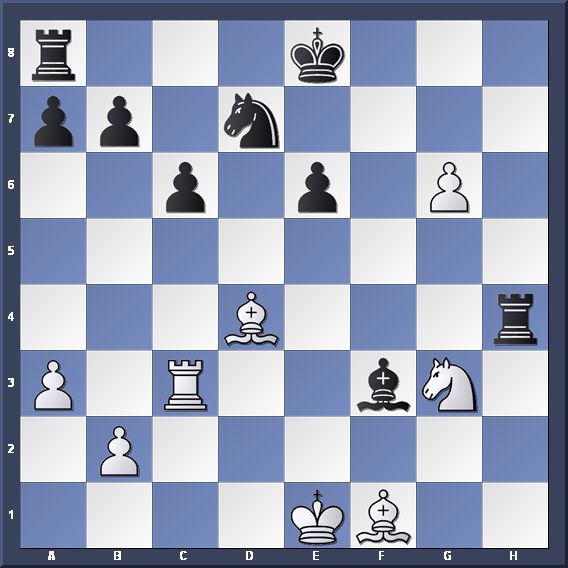
33.Rxf3? (White misses a chance for a little swindle on the diagonal a2-g8: 33.g7!? Ke7 34.Re3 Rxd4? [34...Kd6! 35.Bc3 Bd5 36.Kd2 Rg8 should win for black.] 35.Nf5+ Kf6 36.Nxd4 Bd5 37.Nxe6! Bxe6 38.Rxe6+! Kxe6 39.Bc4+ Ke5 40.g8Q Rxg8 41.Bxg8 with good drawing chances.) 33...Rxd4 34.Bh3 Ne5 35.Rf6 Nd3+ 36.Ke2 Nf4+ 37.Ke3 e5! (Sealing white's fate.)
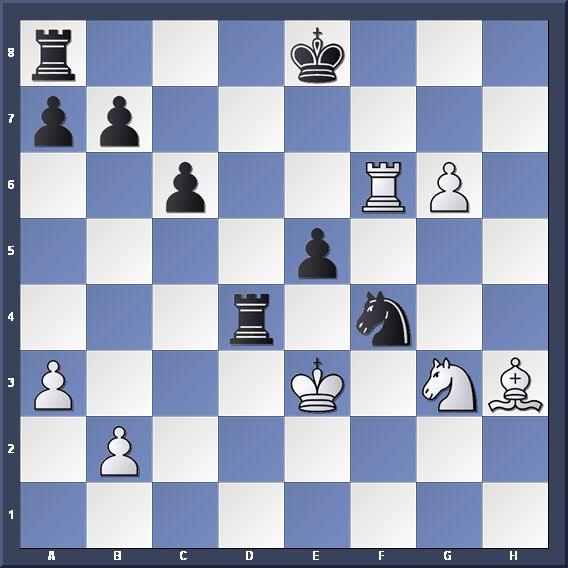
38.Rf7 (The advance 38.g7 is met by 38...Nd5+ 39.Ke2 Nxf6 and black wins.) 38...Rd3+ 39.Ke4 Rxg3 40.Bd7+ Kd8 41.Bf5 Nxg6 42.Rg7 Rb8 43.b4 b5 44.Bxg6 Rg5 (Threatening 45...Rb6 and 47...c5.) White resigned.
</p> <p>
Against the Chinese grandmaster Wang Hao, Carlsen as white handles the Advance variation slowly. But after he outplays his opponent, the Norwegian switches to a fierce attack.
The game is very instructive.
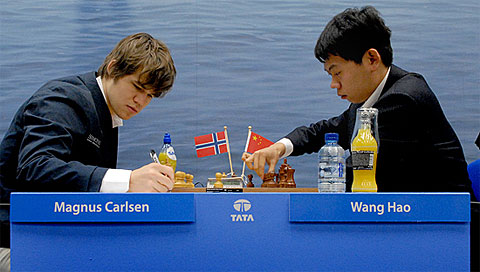
Carlsen - Wang
Wijk aan Zee 2011
1.e4 c6 2.d4 d5 3.e5 Bf5 4.Be3 (Carlsen goes for a positional line, quickly developing his light pieces and avoiding the wild 4.h4.) 4...e6 5.Nd2 Nd7 6.Ngf3 (Preventing the advance c6-c5 with 6.Nb3 runs into the undermining 6...f6.) 6...Bg6 (Freeing the square f5 for the knight. The most popular move seems to be 6...Ne7, some players may hit the center with 6...c5.) 7.Be2 Ne7 (After 7...Nh6 white can use an idea from the French Tarrasch and play 8.Bxh6 gxh6 9.0-0.) 8.Nh4 (Going after the bishop pair.) 8...c5 (The alternative was 8...Nf5 9.Nxf5 Bxf5.) 9.c3 Nc6 10.Nxg6 hxg6 11.Nf3 (White has a strong center, more space and a bishop pair. Moreover, it is hard to find a counterplay for black. Wang Hao bets on a queenside play.) 11...Rc8 12.0-0 a6 13.g3 (Carlsen finds a good plan: fixing the kingside first.) 13...Be7 14.h4 b5
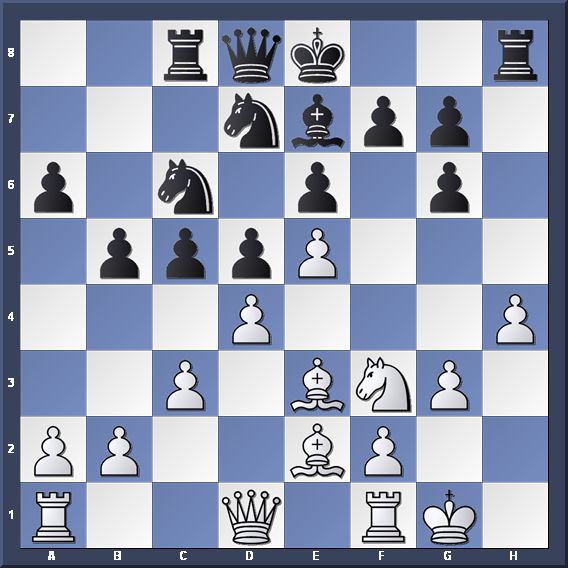
15.a4! (The second rook-pawn move in the row opens the a-file, giving Carlsen the opportunity to operate on both wings.) 15...Qb6 16.axb5 axb5 17.Kg2 c4?! (Closing shop in the center gives Carlsen a free hand on the kingside. Black probably had to close his eyes and play 17...0-0, pretending he did not see the kingside storm.) 18.Ng5 Qd8 19.Bg4 (Sacrifices on the squares e6 or f7 are in the air.) 19...Bxg5 (The exchange seals black's fate, but Wang Hao was afraid of the knight sacrifice, for example after 19...Qb6 20.Nxf7! Kxf7 21.Bxe6+ Kxe6 22.Qg4+ Kf7 23.e6+ Kg8 24.exd7 and black's position collapses.) 20.Bxg5 Qc7 21.Rh1 Nb6 (After 21...Kf8 22.h5 gxh5 23.Bxh5 white's attack is too powerful either after 23...f6 24.exf6 gxf6 25.Qg4 fxg5 26.Qxe6; or after 23...Kg8 24.Qf3!) 22.h5! gxh5 23.Bxh5 Na4? (The wrong adventure at the wrong time. It is only the second time when a black piece ventures into white's territory. It closes the a-file, but does not protect the rook on c8 anymore. The black king doesn't have time to cross to the queenside. For example, after 23...g6 24.Bg4 Rxh1 [24...Kd7 25.Qf3!] 25.Qxh1 Kd7 26.Bxe6+! wins.)
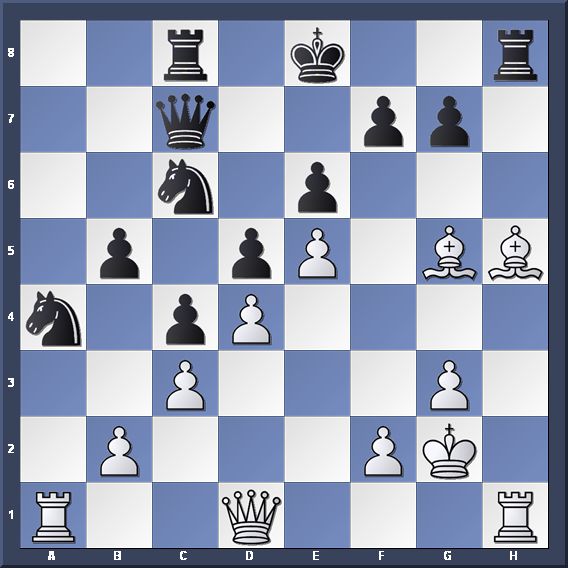
(Carlsen took a deep breath here, calculating the bishop sacrifice. In a critical moment, he wanted to make sure everything worked smoothly and didn't want to trip up.)
24.Bxf7+! (Computer engines could not come up quickly with the bishop sacrifice, but once it was played, they were united in high praise for Carlsen's tactical skills.) 24...Kxf7 (After 24...Qxf7 25.Rxh8+ wins.) 25.Qf3+ Kg8 (After 25...Kg6 white wins with the spectacular 26.Bf6!!, for example
a) 26...Rcg8 27.Rxh8 Rxh8 28.Qg4+ Kh7 [28...Kf7 29.Qxg7+ wins] 29.Qh5+ Kg8 30.Qe8+ Kh7 31.Rh1 mate;
b) 26...gxf6 27.Qxf6 mate;
c) 26...Rxh1 27.Rxh1 Kf7 28.Qh5+ g6 29.Qh7+ Ke8 30.Qg8+ Kd7 31.Rh7+ wins.)
26.Rxh8+ Kxh8 27.Rh1+ Kg8 28.Qh5 (All three white pieces aim at the black king and black has no defense against the beautiful finale.)
28...Rf8 (After 28...Nxb2 29.Bf6! Ne7 [or 29...Qa7 30.Qh8+ Kf7 31.Qxg7+ Ke8 32.Rh8 mate.] 30.Qh8+ Kf7 31.Qxg7+ Ke8 32.Rh7 wins.;
28...Ne7 29.Bxe7 Qxe7 30.Qh8+ Kf7 31.Qxc8 wins.;
28...Nd8 29.Qe8 mate;
28...Qf7 29.Qh8 mate.)
29.Bf6!

(Closing the show with a splendid bishop move. After 29...Qa7 white reshuffles the pieces 30.Qg6 Nb6 31.Rh7 Rf7 32.Qh5 and wins; and after 29...gxf6 30.exf6! Rxf6 31.Qh8+ Kf7 32.Rh7+ Kg6 33.Qg8+ Kf5 34.Rh5+ Ke4 35.Qg4+ Kd3 36.Qd1+ Ke4 37.Qb1 mates.) Black resigned.
Photos © Frits Agterdenbos of ChessVista
No comments:
Post a Comment